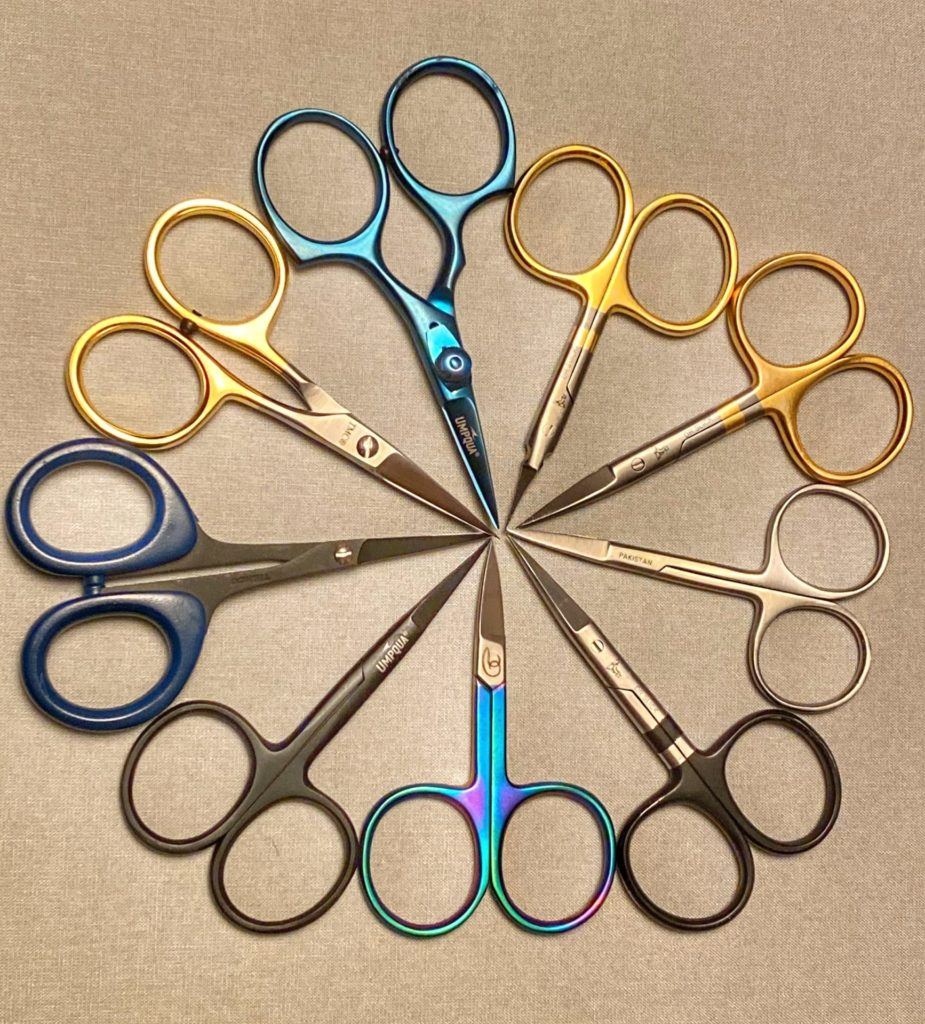
Remember when your mom or grandmother had ‘that’ pair of scissors that nobody was allowed to touch? Those scissors were always sharp, they were always kept in the same place, and she was the only person allowed to use them. At first I thought it was because we (and later on my own kids) were notorious for not putting things away…and then I started tying flies!
Pardon the pun but scissors, are an entirely new kettle of fish! When you buy a vise or bobbin, you can generally feel comfortable that those tools are investments. A mid- to high-quality vise will last anyone their entire hobby’s lifespan. Bobbins also serve their purpose for indefinite periods. For high-quantity tiers–no matter how expensive the scissor—the blades become dull. Scissors have a shorter lifespan, but there are ways to extend the time they spend on your table.
Bobbins and vise aside, scissors are arguably the most important tool in any fly tier’s arsenal.
Finding the Right Scissors for You
As with most tying tools, scissors have to feel good in your hands. Beginning tiers have enough to worry about without fumbling with subpar scissors. Take time to fiddle with scissors before you buy. A reputable retailer will take scissors out of the package if necessary. The basic requirements are a very fine point, made of durable material, and extremely sharp blades. For myself, I adore the Orvis Razor Scissors. The finger loops are delightfully perfect for my hand, the tips are super thin, and they are very, very sharp. The day I dented the inner tip of a blade trying to trim too close to a hook eye, my inner soul cried. I tried less expensive pairs, but nothing was just right for me. Do you need $35 scissors? Absolutely not! Would you love these? I think you would!
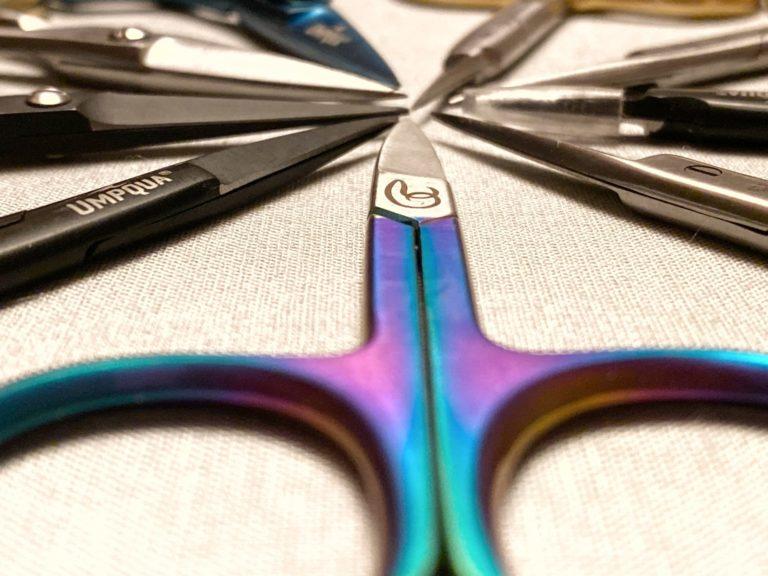
Just like bobbins, it may take a few tries to select the right scissors for you. Both my husband and I tie 5 – 6 days/week, but we have different scissors because he has bigger fingers. You never really think about the finger holes of scissors until you are using them for hours on end. Some people prefer plastic coated handles, some prefer metal. Entirely your preference. The good news is that even if you choose a few duds based on packaging claims, there is still a place on the fly table for them. Read on!
Some people prefer plastic coated handles, some prefer metal.
Keep Your Scissors Sharp
Having sharp scissors is paramount to successful tying. As with Gramma’s scissors, they stayed sharp because we were not allowed to use them to cut things like plastic packaging. Quilters and needlepoint gals know that you only cut fabric with your good shears. The same applies to fly tying. Many materials are laying on the table: feathers, thread, wire, foam, chenille, etc. Your good scissors will last MUCH longer if you use your best scissors only on the soft material. Makes sense, right?
I never use my good scissors for cutting anything but feathers, thread and chenille.
Different Scissors for Different Applications
What about the rest of your cutting needs? I keep no less than three pairs of scissors on the table at all times. Remember the scissors you bought and didn’t love? Here is a perfect use for them! Cutting wire (even brassie size) will dull scissors fairly quickly. Cutting foam is not as bad, but kids blunt-tip kindergarten scissors or any scissors laying around the house are perfectly fine for cutting wire. For myself, I use much less expensive Fiskar’s 4″ Detail Scissors for more tenacious material because they can be replaced with another cheap pair at any time. Similar brands are sale at your local craft store regularly.
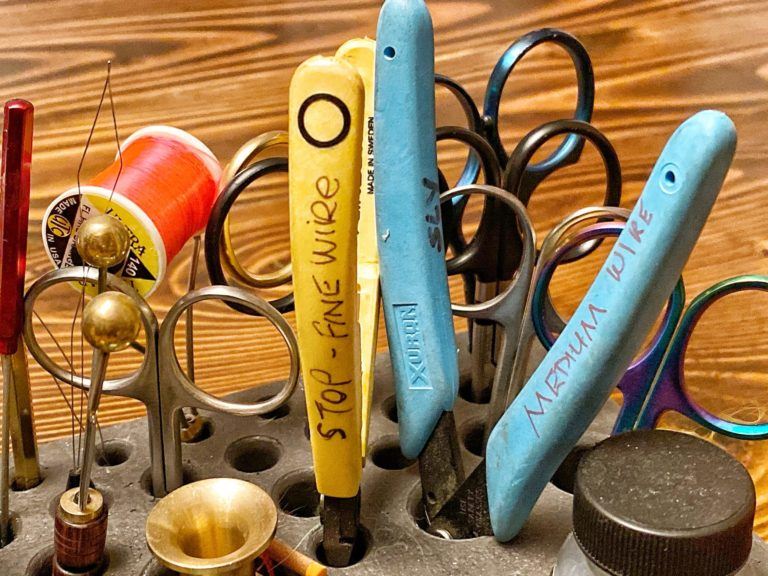
Scissor Sizes
The third pair of scissors I keep on my table have longer blades and are of a Fiskars-esque quality. These are great for any material you may want to cut that may require a longer cut or is just more comfortable to cut with a larger scissor. I use them to cut craft foam, craft hair, or paper.
It takes discipline to remember which scissors to use when you are working through a new pattern, but good habits will pay off in the end. Don’t rush yourself, think about what you’re cutting before you choose the tool. Soon it will become second nature!
Sharpening Scissors
There are two camps on sharpening scissors. If you are at the table as much as I tie, a new pair of scissors is a delight that cannot be matched. Most commercial tiers I know may have a few pairs of good scissors, but many do not have the time to send them out to get sharpened. They just replace as needed. A very busy commercial tier can plow through a good pair in three months, but they are tying hundreds of flies in the time a hobbyist may take a year to tie. Once my ‘good’ pair becomes dull, they become my wire scissors!
More frugal tiers will send scissors out to be sharpened. If you choose to sharpen, I’d suggest purchasing two pairs. If one pair needs sharpened, you are still in business.
Once my ‘good’ pair becomes dull, they become my wire scissors!
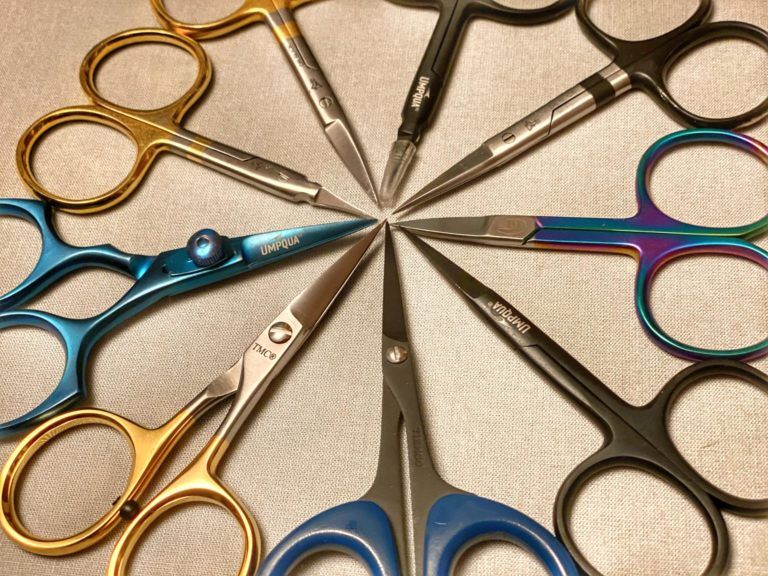
Bottom line, the fish will not know what kind of scissors you used to tie those flies. If your goal is to tie a clean fly, really learn the patterns without frustration, and be comfortable as you tie, a good quality pair of scissors is the most important tool on the table. The good news is that dull scissors still cut science fair projects, plastic packaging and zip through box tape on your most recent purchase from the fly shop!
I asked a few of my tying ‘idols’ what was on their desk. Our own UWOTF Fly Tying pro Casey Pfeiffer is a fan of Dr. Slick’s scissors. Justin Aldrich loves Dr. Slick’s 3.5” Arrow Point Fine Point Scissors for fine work and he simply works them through their prime and moves dull tools down to the ‘wire scissors.’ Justin ties amazing nymphs and tiny dry flies.
Sam Beitel ties beautiful dry flies, tenkara flies and plenty of other tiny patterns. His favorite pair are the Dr. Loon Ergo All Purpose scissors. He generally keeps several pairs in use so he’s not reaching for just one pair to do the job, but he also has general scissors to cut wire and more sturdy material.
$75 surgical steel scissors? Those are for the folks that have $1,000 rods.
In your tying journey, you will come across loads of scissor options. Curved blades? My husband loves to use those for egg patterns. Stainless steel? Nice, but not necessary. $75 surgical steel scissors? Those are for the folks that have $1,000 rods. The absolute bottom line is what your hands feel most comfortable in and what you can afford. If the $75 scissors make your heart sing, go right ahead and invest! As with everything in our glorious lifestyle as fly fishers, there is a solution for everyone that wants to learn!


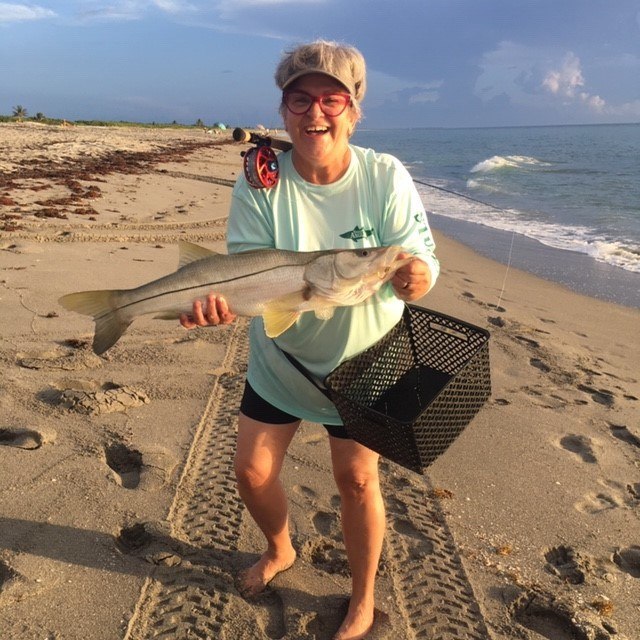


Why didn’t include how to sharpen scissors yourself? I have been sharpening my own scissors for 50 yrs.
Joel – thank you for reading the blog and writing a comment. The author chose not to include this subject into the her blog. Do you have a link to a good blog post that we can direct our readers for this subject?